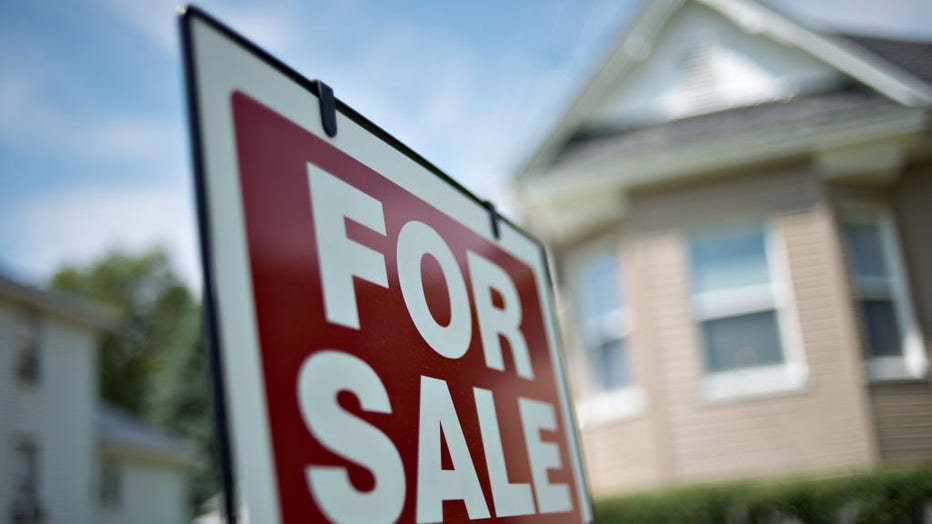Loan amortization: The secret sauce of mortgages

Make the most out of loan amortization
FOX 5 real estate expert John Adams explains what you need to know about us all about loan amortization along with sharing some tips to beat the system.
The number one hurdle for most prospective home buyers is getting approved for a loan. But once that’s done, how is your monthly payment calculated? And is there anything you can do about it?
FOX 5 real estate expert John Adams shares what you need to know about loan amortization and some tips to beat the system.
What is Loan Amortization?
Loan amortization is the process by which a borrower repays a loan through scheduled, periodic payments that cover both the principal amount and the interest. Essentially, it involves breaking down a loan into manageable chunks to ensure that the entire balance, including interest, is paid off over a specified period. Typically, these payments are made monthly and are calculated to ensure that the loan is fully paid off by the end of the term.
When you take out a mortgage, you agree to pay back both the amount you borrowed (the principal) and the lender’s fee for loaning you the money (the interest). Amortization schedules distribute these payments over the life of the loan, ensuring you chip away at the principal while also covering the interest. This is called an ammo schedule. It shows how each payment is divided, providing a clear roadmap of what you owe and when.
Let's assume a brand new 30 year fixed rate mortgage of $100,000 at 7.75% with monthly payments of $716.41 (your lender will tell you). This covers only your loan payments - taxes and insurance will be extra!

A "for sale by owner" sign stands outside a home. (Daniel Acker/Bloomberg via Getty Images)
How Amortization Affects Your Loan Payments
Amortization significantly impacts the structure and amount of your monthly payments. At the beginning of your mortgage, a larger portion of your monthly payment goes towards paying off the interest, with a smaller amount allocated to reducing the principal. As time progresses, this balance gradually shifts. In the latter years of the loan term, the majority of your payment goes towards reducing the principal, with a smaller portion covering the interest.
Truth be known, the interest vs principal mix benefits the borrower. That’s because the interest portion of the payment is tax-deductible, while the principal portion is not. So, in the beginning, the vast majority of your mortgage payment is likely to be tax-deductible.
- Multiply the balance by the interest rate
- Divide by 12 for the monthly interest cost
- Subtract the monthly interest from the payment
- The remainder is principal portion of the payment
- Subtract the principal from balance for the new balance
- Repeat Steps 1 through 5 and do it for 360 months in a row.
- The balance will be zero
Understanding this mix of principal and interest is important for homeowners because it affects the equity you build in your home.
Equity is the difference between the market value of your home and the amount you still owe on your mortgage. In the early years, since you're paying more interest, your equity grows slowly. But as you make more payments over the years and more of your payment goes towards the principal, your equity increases more rapidly.
And because your home typically goes up in value over time, you get a boost from appreciation and a boost from loan paydown. Time is literally on your side.
Tips for paying off your loan faster
For many homeowners, the goal is to own their home outright as quickly as possible.
Here are some effective strategies to pay off your mortgage faster:
1. Make extra payments: One of the most straightforward ways to reduce your loan term is by making extra payments towards the principal. Even small additional amounts can have a significant impact over time. For instance, if you receive a bonus or a tax refund, consider applying it to your mortgage.
2. Bi-weekly payments: Instead of making monthly payments, switch to a bi-weekly payment plan. This method involves making half of your monthly payment every two weeks. Since there are 52 weeks in a year, this results in 26 half-payments, or the equivalent of 13 full monthly payments. This extra payment each year can shave off years from your mortgage term and save you thousands in interest.
3. Refinance to a shorter term: Refinancing your mortgage to a shorter term, such as from a 30-year to a 15-year mortgage, can significantly reduce the amount of interest you pay over the life of the loan. Although your monthly payments will be higher, you'll pay off the loan in half the time.
4. Round up payments: If making extra payments isn't feasible, consider rounding up your monthly payment to the nearest hundred dollars. For example, if your mortgage payment is $975, round it up to $1,000. This small increase can reduce your principal balance faster and decrease the total interest paid.
5. Use windfalls wisely: Use financial windfalls such as bonuses, tax refunds, or inheritance wisely. Instead of spending it all, allocate a portion to your mortgage principal.
6. Review your amortization schedule regularly: Keep an eye on your amortization schedule to track your progress and adjust your payment strategy if needed. This will help you stay motivated and see the impact of your extra payments.
7. Avoid extending loan terms: When refinancing or modifying your loan, avoid extending the term. While it may reduce your monthly payment, it often increases the total interest paid over the life of the loan.
Adams calls loan amortization the secret sauce of mortgages.
When you understand how amortization works and take steps to pay off the loan faster, you can save significant amounts of money and achieve financial freedom sooner.

